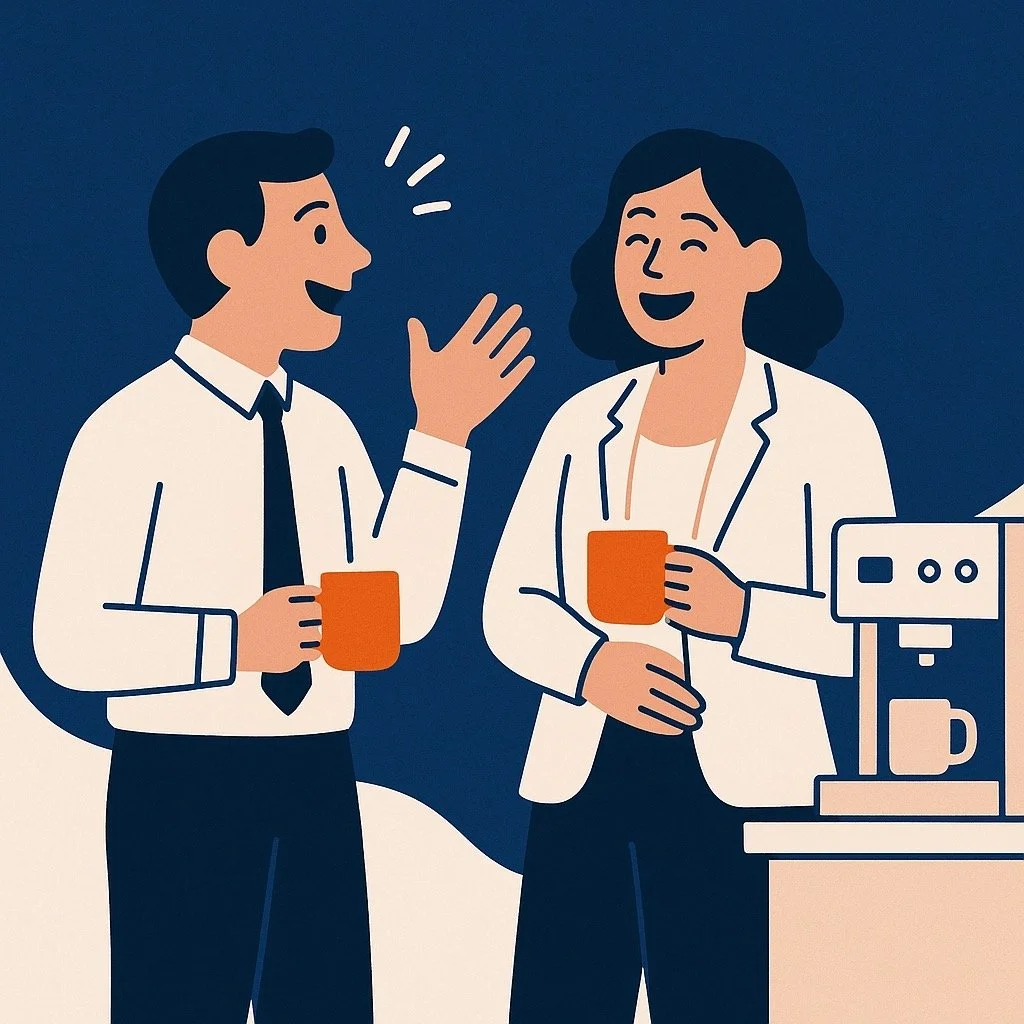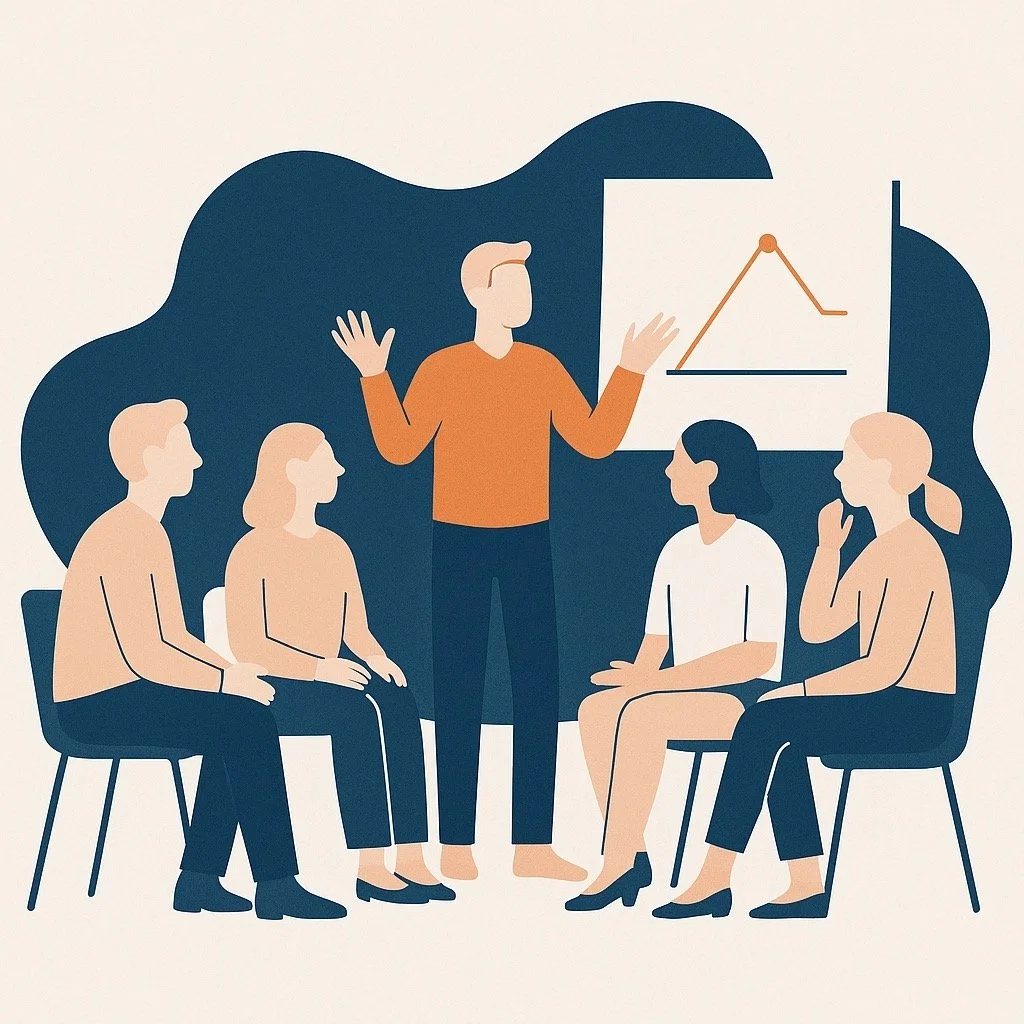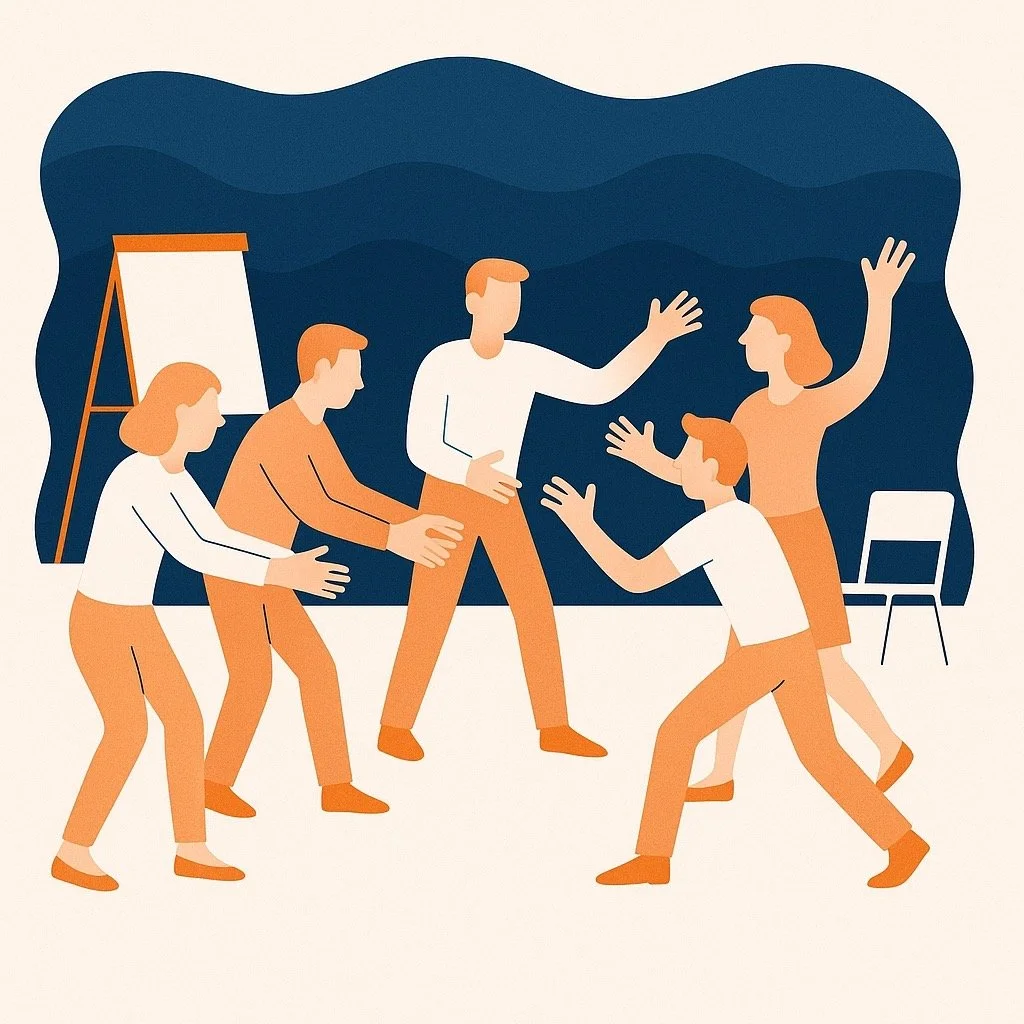Punchlines & Productivity: Using Comedian Tricks to Boost Collaboration at Work
Ever noticed how the most productive teams are often the ones cracking jokes by the coffee machine? That's no coincidence. As it turns out, the same techniques that keep audiences rolling in the aisles can transform workplace collaboration from mundane to magical. At Chatterbox Workshops, we've seen firsthand how comedy principles create team environments where ideas flow freely, communication barriers dissolve, and productivity soars.
Let's explore how you can steal tricks from the comedy world to supercharge your team's collaborative power – no spotlights or two-drink minimums required.
Why Comedy Works in the Corporate World
Before we dive into techniques, let's address the elephant in the boardroom: workplace fun still gets a bad rap. Many leaders worry that introducing humor means sacrificing professionalism or productivity. The research suggests otherwise.
When teams laugh together, they experience:
Up to 25% higher productivity rates
Significantly decreased stress levels
Enhanced creative problem-solving abilities
Stronger bonds and improved trust
Better information retention
Comedy works because it creates psychological safety – that magic ingredient where team members feel comfortable taking risks without fear of embarrassment. And risk-taking is the precursor to innovation.
As Stanford professor Jennifer Aaker notes, "Humor is a powerful tool to foster innovation and creativity as it puts us in a positive mood, helps us connect with others, and changes our perspective."
The "Yes, And" Philosophy: Improv's Gift to Collaboration
The fundamental rule of improvisation comedy is simple yet revolutionary: "Yes, and..." This principle requires performers to accept whatever their scene partners offer (the "yes") and then build upon it (the "and").
When applied to workplace collaboration, this approach transforms how teams interact:
How to Apply "Yes, And" in Your Team:
Replace "No, but" with "Yes, and": When someone shares an idea, resist the urge to immediately point out flaws. Instead, acknowledge the contribution and build on it.
Run "Yes, And" training exercises: Start meetings with quick improv games where each person must accept and build upon the previous person's statement.
Create judgment-free brainstorming zones: Designate specific times where all ideas are welcomed without criticism. Save the practical evaluation for later.
A client of ours, a Melbourne-based tech company, implemented "Yes, And Wednesdays" for their product development team. The result? A 34% increase in viable ideas making it to prototype stage within just three months.
Crowd Work: Turning Monologues into Dialogues
Stand-up comedians know that engaging directly with the audience transforms a one-way performance into an interactive experience. The corporate equivalent? Turning presentations and meetings from monologues into dialogues.
Comedian Crowd Work Techniques for Better Meetings:
Use callback references: Reference earlier comments or contributions from team members, showing you're actively listening.
Ask specific questions: Rather than "Any thoughts?", try "Sarah, how might this approach affect your department's workflow?"
Read the room: Comedians constantly assess audience energy and adjust accordingly. Meeting leaders should do the same, shifting gears when engagement wanes.
Create space for quiet voices: Just as comedians sometimes find gold by engaging with quieter audience members, leaders should create opportunities for less vocal team members to contribute.
One workshop participant told us: "After applying crowd work techniques in our weekly status meetings, participation increased by 60%. People actually look forward to these meetings now!"
Storytelling: The Secret Weapon of Comedy and Collaboration
Great comedians aren't just joke-tellers – they're masterful storytellers. They create narratives that connect with audiences on an emotional level while delivering their message.
How to Use Comedic Storytelling for Team Building:
Structure with purpose: Use the classic story arc (setup, conflict, resolution) when presenting problems and solutions.
Embrace vulnerability: Share genuine stories about mistakes or challenges you've faced, inviting others to do the same.
Use analogies and metaphors: Abstract concepts become memorable when compared to everyday experiences.
Create shared stories: Encourage team storytelling activities where members collaborate to build narratives around workplace experiences.
Research from the London Business School found that teams who engage in collaborative storytelling demonstrate 27% higher cohesion scores than those who don't.
Timing and Delivery: The Rhythm of Effective Collaboration
Comedians understand that how you say something matters as much as what you say. Timing, pacing, and delivery are crucial elements of effective communication in any context.
Comedy-Inspired Communication Techniques:
The power of the pause: Learn to use strategic silence to emphasize important points or allow ideas to land.
Vary your pace: Quick delivery for routine matters, slower for complex concepts that require processing.
Rule of threes: Structure key points in groups of three for maximum impact and memorability.
Call back to earlier points: Reference previously discussed ideas to create a sense of narrative cohesion.
A marketing team we worked with reported that after adopting these techniques, their client presentation approval rate jumped from 68% to 91%.
The "Roast" Reimagined: Constructive Feedback That Doesn't Burn
Comedy roasts can be brutal, but they work because they operate within clear boundaries and mutual respect. We can adapt this concept to create feedback systems that are honest without being hurtful.
How to Create Comedy-Inspired Feedback Loops:
Establish psychological safety first: Ensure team members know criticism is about the work, not their worth.
Use the "compliment sandwich": Start with genuine praise, offer the improvement suggestion, then end with encouragement.
Normalize self-deprecation (from leaders): When leaders can laugh at their own mistakes, it creates space for others to accept feedback gracefully.
Create formal but fun review processes: Some teams have success with structured feedback sessions that include elements of play.
Remember: The goal is never to embarrass but to elevate. As one workshop participant noted, "When my manager started our feedback session with a lighthearted joke about her own similar mistake last month, I instantly felt more receptive to the critique."
Warmups and Games: Priming the Collaboration Pump
Every comedian knows the value of warming up before hitting the stage. Similarly, teams benefit from activities that prepare them for collaborative thinking.
Comedy-Inspired Team Warmups:
Word Association Speed Rounds: Quick-fire association games get minds working nimbly.
"What's in My Pocket?": Teams invent increasingly creative explanations for an imaginary object.
Character Perspective Shifts: Approach problems from the viewpoint of different characters or personas.
The Punchline Game: Provide only the punchline of a joke, and teams must work backward to create the setup.
These activities might seem silly at first glance, but they serve a serious purpose: breaking down inhibitions, encouraging lateral thinking, and creating the conditions for psychological safety.
Implementing Comedy Culture: A Roadmap
Transforming your team culture doesn't happen overnight. Here's a strategic approach to introducing comedian techniques into your workplace:
Start small: Begin with simple warmup exercises in lower-stakes meetings.
Lead by example: Leaders should model the willingness to be playful and occasionally vulnerable.
Create physical environments that support collaboration: Designate spaces for creative thinking and playful interaction.
Recognize and reward innovative collaboration: Celebrate when comedy-inspired techniques lead to breakthroughs.
Provide resources and training: Consider bringing in experts to facilitate workshops on improv, storytelling, and other comedy-based skills.
As you implement these strategies, remember that the goal isn't to turn your workplace into a comedy club. Rather, it's about borrowing time-tested techniques from the world of comedy to create an environment where collaboration thrives.
The Last Laugh: Why This Matters
In an era of rapid technological change, uniquely human skills like humor, storytelling, and collaborative innovation are becoming increasingly valuable. While AI can generate content and analyze data, it can't replicate the chemistry of a team that works well together.
By incorporating comedian techniques into your collaboration processes, you're not just making work more enjoyable—you're creating a competitive advantage. Teams that can laugh together, think creatively together, and build on each other's ideas will consistently outperform those trapped in rigid, humor-free environments.
At Chatterbox Workshops, we've seen remarkable transformations when organizations embrace these principles. From improved retention rates to breakthrough innovations, the benefits extend far beyond a few chuckles around the conference table.
So go ahead—steal from the comedians. Your team's collaboration (and your bottom line) will thank you for it.
Want to learn more about how comedy-inspired techniques can transform your team's collaboration? Check out our workshop offerings or explore more insights on team development and workplace training.
After all, in the words of Victor Borge, "Laughter is the shortest distance between two people." And in business, closing that distance just might be your greatest competitive advantage.




